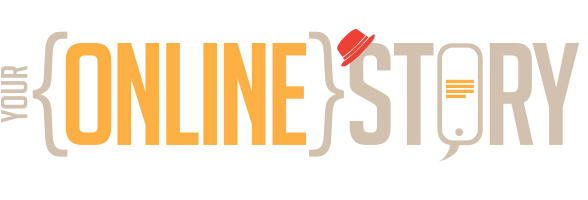Now that the AI revolution is here, the clock is ticking for you and/or your business. The potential for job displacement, business disruption and increased competition is high. What should you be thinking about to adapt, innovate, and thrive, in this brave new digital world?
To be an AI Survivor, cue up Eye of the Tiger and read on.
Opportunity Knocks
AI technology is here. Many of us have been generating derivative images, content, voices and more. Large Language Models are like super-smart search engines that can chat with you. We’re seeing dancing robots on YouTube. It’s not perfect; in some cases terrible, though it is fascinating.
What’s at stake?
There’s a growing list of uses. Automation, Reduced Labour Costs, Supply Chain Optimisation, Image Recognition, Drug Discovery, Self Driving Vehicles, Traffic Systems, Dangerous Jobs, Medical, Innovation, Personalised Learning, Share Trading, Fraud Detection, Customer Self Service, Smart Energy, Surveillance, Content Personalisation, Climate Modelling and many more.
We’re at the same point as the development of the internet and the introduction of search engines.
Is there a way to get on the bus, and not get thrown under it?
Australian Investment
“Australian organisations are predicted to spend around $3.6 billion on artificial intelligence systems in 2025”, according to research from IDC. Further “spending growth represents a compounded annual growth rate (CAGR) of 24.4 percent from 2020 to 2025, as organisations increase their investments”. Currently Robotics is, “projected to reach US$691.50m in 2023, with slower growth at 0.05%”, according to Statista.
The Australian Government allocated AUD $101.2 million over five years, in the Federal Budget to support small businesses integrating quantum and AI technologies. This will cover expansion of the National AI centre, establishing a Critical Technologies Challenge Program and establishing an Australian Centre for Quantum Growth to support the commercialisation of Quantum computing.
From the previous Federal Government this also included programs at the Department of Industry, Innovation and Science, CSIRO and the Department of Education and Training.

Disruption. What to consider?
It’s worth taking a moment to think about how AI and Robotics could shape our personal and professional lives. The real question is, are we — and our businesses and communities — ready to adapt to these changes?
Recent events demonstrate that we sometimes miss the chance to voice our opinions. We’re finding ourselves grappling with the fallout of a cat that’s already been let out of the bag.
It’s Personal
There are many issues though I think there are probably four key ones.
- Job Displacement
- Business Disruption
- Personal Safety
- The New World
Job Displacement
One of the most immediate concerns about AI technology is its impact on employment. AI could either streamline operations to the point where jobs are lost, automate tasks entirely, and open up new job opportunities.
Cisco’s research estimates that by 2028, 630,000 Australian workers could lose their jobs to AI technology. It’s very hard to find the number of jobs created by AI.
McKinsey and Company said in March 23, “Without increased employment transition support, increased job churn could see Australia’s unemployment rate temporarily spike by up to 2.5%, during the peak of the transition.”
It’s crucial to recognise that job losses in fields like customer service, clerical work, accounting, graphic design, trading, investment, market research, and middle management go beyond the issue of retraining. This becomes even more significant with the introduction of humanoid robots.
Cisco’s model does predict higher productivity and thus more spending on goods and services, though who is doing that spending?
Business Disruption
The ripple effects on businesses are equally significant. Take, for example, the 1980s when the introduction of the Macintosh Computer revolutionised the publishing industry. It marked the end of pure Typesetting and ushered in the era of Desktop Publishing. While some traditional graphic designers, typesetters, and printers adapted, others vanished.
This causes further disruption to jobs, suppliers, customers and connected businesses.
Personal Safety
Your digital safety is going to get a ‘knock’ from AI.
- Misinformation: is a growing concern. How can you trust the authenticity of images, videos, or audio? Is the content manipulated to promote propaganda or discrimination? Is your personal data being used to influence your choices or reinforce biases? With an ever-increasing volume of data, including snippets of your own images and audio, the issue of biased training data also comes into play.
- Cybersecurity: The use of AI systems could potentially increase vulnerability to hacking, depending on how these systems handle or store your input. Could this make it easier for attackers to repeatedly guess and eventually crack your password?
- Who is responsible: Misdiagnosis in AI-assisted medical care? Accidents or chaos with self-driving cars?. Weaponisation with drones and robots lacking the ethical reasoning needed for life-or-death decisions in warfare? Accountability is going to be a huge challenge along with, “Hey maybe don’t do that thing?”
The New World
- Upheaval: As AI and Robotics become increasingly integrated into our lives, we face a range of challenges, from shifts in the job market and societal imbalances, to the emergence of something we’ll label intelligence. These changes may lead to discomfort, increased effort, depersonalisation, isolation, and mental health issues.
- Originality/Depth: Right now generated creative is derivative, even with transformation in other tools. It’s based on training data used (in a lot of cases) without permission. Having a collection of drum samples doesn’t make you the next Beethoven, just as preferring a burger and fries doesn’t equate with a fillet mignon. Fast food may be seen to be enough?
- Ethics: It’s hard for the law to catch up and ethics are usually ‘surprisingly’ ignored by the unethical.

Individual Action Plan
Job Risk Assessment
- Tasks: Evaluate the tasks you perform in your job. Are they repetitive, rule-based, or data-driven? These tasks are more susceptible to automation.
- Industry: Research how AI and Robotics are being implemented in your industry. Are companies in your field investing in these technologies?
- Skills: Assess your skills and how easily they could be transferred to another role. The more specialised your skills, the less likely they can be easily automated. Consider your skills that are complementary to AI, such as data analysis, problem-solving, and emotional intelligence.
- Company: Check if your company has policies or plans related to AI and Robotics. Are they planning to up-skill their employees or do they have a history of layoffs due to automation?
- Regulatory: Are there any laws or regulations regarding AI in your industry?
- Financial: Have your act together so you can mitigate the disruption. Review your contracts.
- Training: If that is relevant. Is it for a new job, or to keep this one?
Personal Safety Risk Assessment
- Data and Security: Evaluate the security measures of the AI and Robotics technologies you interact with. How is your data being used and stored? Think about all services you use online and think about their security policies on your accounts. Opt-out where it makes sense and adjust privacy settings.
- Physical Safety: If your job involves working alongside factory robots, assess the safety measures in place. Are there emergency stop functions, for example? Adjustments are going to have to be made as driverless, peopleless things are interacting in our world.
- Online: Be cautious of AI-driven social engineering attacks. Are you aware of how to spot deepfakes or manipulated content?
- Ethical: It’s vital to assess whether these new technologies align with your values. For society to function well, the gains from AI and Robotics should uplift everyone.
- Societal: As technological changes unfold, stress levels may rise. It will be important to lean into human strengths, emotional intelligence, critical thinking, and leadership. These skills may help understand the nuanced contexts in which others may be struggling.

Business Risk Assessment and Actions
- Core Services: Evaluate the core services. Identify which services are most susceptible to automation or AI-driven solutions.
- Competitive: Research how competitors are adopting AI and Robotics. Consider how these technologies could give them a competitive edge.
- Clients and Customers: Gauge client expectations around AI and Robotics capabilities. Are clients increasingly seeking these solutions? Decide how you will communicate changes to clients. Transparency can go a long way in maintaining trust during times of change. Maintain a balance between automated services and human customer service.
- Operational: Assess how AI could streamline operations, reduce costs, or improve service delivery. Weigh these benefits against the costs of implementation and potential job displacement.
- Regulatory and Ethical Compliance: Keep abreast of regulations concerning AI and data usage. Consider the ethical implications, especially if your consultancy deals with data analytics or personalised marketing.
- Supply Chain and Partnerships: Evaluate how AI and Robotics could disrupt your supply chain or vendor relationships. Are there opportunities for new partnerships?
- Financial Resilience: Conduct a cost-benefit analysis to understand the financial implications of adopting or ignoring AI and Robotics. Consider scenarios like reduced client intake due to not offering AI services or the costs associated with implementing new technologies.
- Talent: Assess the skills within your team. Plan for potential up-skilling or hiring to meet new tech demands.
- Business Continuity: Develop contingency plans for various scenarios, such as rapid AI adoption in your industry or AI-driven security threats. Look for opportunities.
- Data Security: Regularly audit the data used in AI algorithms to ensure it’s unbiased and accurate. Implement robust cybersecurity measures to protect data and AI systems. Use AI to enhance customer experience but avoid overly intrusive data collection. If you are in AI Regularly audit the training data to identify and remove any biassed or discriminatory information. Fraud protection and data breach is now through AI?
- R&D Investment: Invest in research and development for AI-based products or services. Partner with AI and Robotics firms to stay ahead of the curve.
I’d love to explore these topics more, so please comment below or if you have some questions, contact me at virgil@youronlinestory.com.
Read the related philosophical article here.
Now this track is appropriate for the ending The Final Bell


